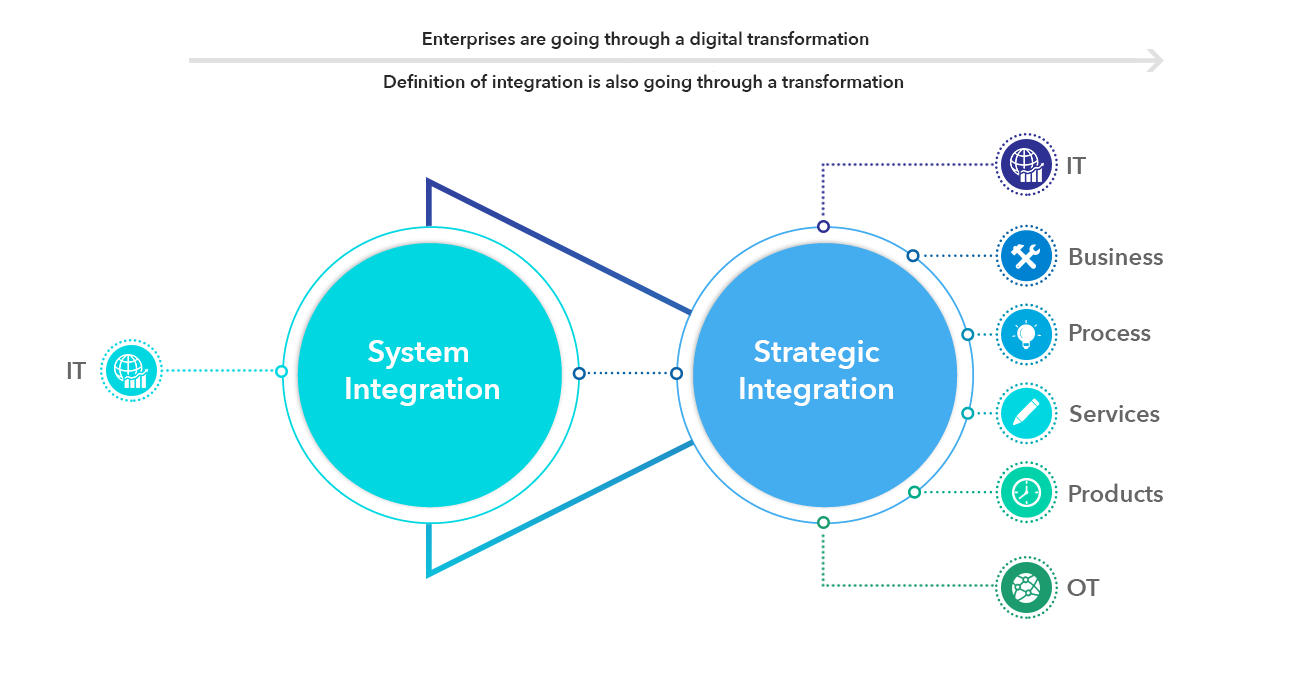Lately, companies of all sizes have more and more relied on digital instruments and applied sciences. There was a fast improve in adopting the latest developments to reinforce productiveness and effectivity and enhance processes and outputs.
Of their quest to go digital, many organizations are compelled to surrender their previous methods and welcome up to date processes and techniques with open arms. Some traditions are arduous to let go of. Thus, enterprise homeowners and workers alike may be apprehensive of the modifications that include digital transformation.
How can your corporation make sure that to change it up with out shedding current information, techniques, processes, methods or individuals? An built-in system will deal with all of your troubles and considerations.
What system integration means
Each enterprise, at any cut-off date, typically has a mixture of handbook and automatic on-line and offline techniques to handle every side of its operation. To reap maximal advantages from international technological developments, companies should totally embrace the digital age. Nevertheless, going digital can take time.
Many organizations that began early on took every course of or division via digitalization. Others wished to endure digital transformation in a single go — a tiresome, high-risk and costly course of. To take a cautious, calculated method to digital transformation, there may be one integral a part of the method you can’t ignore — system integration.
System integration refers to gathering the varied separate modules, processes and information techniques and having them work in a unified method. It allows organizations to streamline operations, strengthen collaboration between departments, and enhance operational effectivity. This course of not solely facilitates the introduction of recent IT techniques to current digital environments however may assist mix fashionable techniques with dated legacy ones.
The advantages of system integration
Lately, the international system integration market has been rising at spectacular charges, and Grandview Analysis predicts an upward pattern for the subsequent few years. Allow us to discover why system integration is important to the digital transformation journey and the way it can profit your corporation.
1. Decrease prices
Putting in and sustaining a number of disparate subsystems may be costly. The prices can shortly rack as much as staggering quantities over time. With an built-in fashionable system, your group will not should host and handle a number of techniques and their particular person information shops. A consolidated system will scale back redundancy and repetition and permit useful sources to be reallocated towards extra essential duties or areas of operation.
Moreover, and not using a correct system integration technique, the considered present process digital transformation may be daunting. Introducing a extremely complicated state-of-the-art digital system to be applied throughout the complete group without delay will incur important monetary harm, to not point out the intimidation and doubt it’s going to solid over the workforce. System integration will help assuage the impression of digital transformation by placing current techniques to their finest use and solely introducing new parts the place needed.
2. Improved efficiencies
Working with many techniques — a few of which can be fully remoted — negatively impacts performances and subsequent outcomes. There generally is a sizable hole in communication and collaboration. Remoted techniques might should be manually up to date with new incoming information. And allow us to not overlook the effort you would need to undergo each time some essential data wanted to be retrieved. Quite a lot of time could be wasted on interdepartmental communication for the only trade of knowledge, additional delaying time-critical resolutions. Even minor errors might trigger catastrophic outcomes.
With a consolidated digital platform, you’re going to get many advantages by way of greater effectivity.
Firstly, system integration will facilitate data switch by offering a excessive degree of connectivity between groups and departments. This leads us to the second profit — huge time-saving. Introducing a digital system would open up new potentialities for automating mundane and important duties. Pressing selections may very well be made in actual time. Every member of your group would then be capable to focus their efforts and energies on extra essential issues, boosting the group’s collective productiveness and effectivity.
3. New insights
With disparate subsystems all dealing with totally different data shops, there’s a sure hole that may generally be troublesome or not possible to bridge. Companies might miss out on a goldmine of useful insights and studies that prime volumes of knowledge might probably present. Consequently, they possible make pivotal selections based mostly on incomplete or inaccurate information.
With an built-in system, all of the related individuals can entry any information they want at any time. This information can then be used to investigate worker, division or general enterprise efficiency. The insights you acquire into your corporation’s operations can then be used to make any modifications wanted to enhance outputs and outcomes.
Wrapping up
System integration is an important a part of the digital transformation course of, a section with out which companies will be unable to expertise the true benefits of going digital. Thus, your finish objective must be not simply introducing newer, extra modern IT techniques within the office but in addition making room for any changes needed for a very digital, clean and unified expertise.



